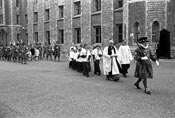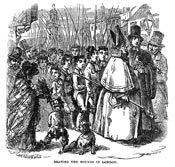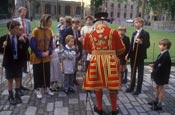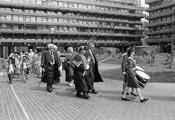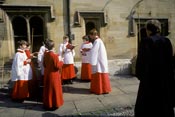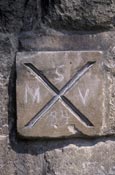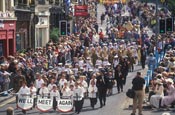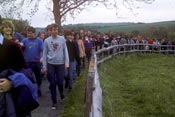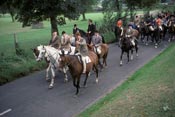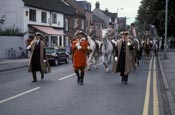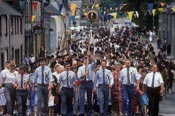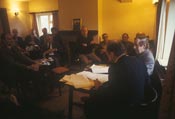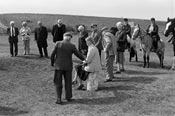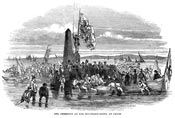
Beating the Bounds was once vital because parish boundaries were often disputed and boundary stones could be moved or stolen. Today modern maps make everything clear so there is no real need to do it but some parishes still beat their Bounds for the sake of tradition. Parishioners, led by the priest and churchwardens perambulate the boundary stones (sometimes in houses or shops) to make sure everything is in order, beat the marker, say a prayer or sing a short hymn and perhaps make a mark to prove they had been there. Initiates might be bumped on the stones so that they would never forget. Some expanded to the whole town or borough. Laugharne Common Walk is a testing 25 miles every three years; Richmond ‘Ride the Bounds’ but actually walk a more manageable 16 miles every seven; Lichfield do their 16 miles on horseback on the annual Sheriff’s Ride. The Scots go over the top with their Common Ridings. There are more than a dozen of them, each lasting days, complete with proclamations, elections, gatherings, processions and ‘rideouts’ with hundreds of mounted Scots; each is presided over by an elected figurehead with a name like Callant, Riever, Whipman, Standard Bearer, Braw Lad who is king of the town for a whole year. ‘Dunting the Freeholder’ at Newbiggin-by-the-Sea is a more modest affair. Since 1235 Freeholders have owned 185 acres of land close to the sea. Eight centuries have divided the area into 77 ‘stints’ which are currently owned by about 50 people, but in different proportions, some as big as twelve stints and some as small as one sixteenth. It is possible to buy and sell stints but historically they have been handed down through many generations. The land is rented out at market rates (primarily to Newbiggin Golf Club) so there is significant income to divide among the stint holders. Each May they beat the bounds and if there is a new Freeholder he or she gets ‘dunted’ on a white stone on the eighth fairway of the golf course.

